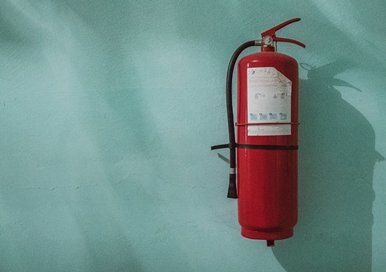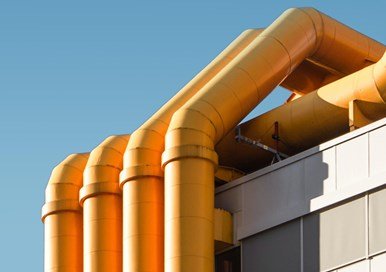Are you familiar with the lab biosafety information and BSL requirements needed to handle an outbreak – such as the one we are facing now, but also any other health-safety breach possible in the future?
Biological safety levels, or BSL, purport a series of protection protocols committed to processing temperature and pressure in relation to activities taking place in a research facility.
We present the following blog as a quick laboratory biosafety classification guide filled with safety tips for laboratory personnel working in BSL Labs 1, 2, 3, and 4. In addition to laboratory safety guidelines, we included examples of microorganisms commonly treated within each laboratory designation.
Laboratory Biosafety Levels Ranking
Biological safety levels are ranked from level 1 to 4 and selected based on the agents or organisms that are being examined or researched within the laboratory setting.
A “basic” lab setting specializes in the research of nonlethal agents that pose none or a minimal potential threat to workers and the environment. These lowest biosafety labs are generally considered BSL 1 – Biosafety Level One.
On the other hand, when a laboratory specializes in research of potentially deadly and/or highly infectious agents, it is designated to be BSL 4 – Biosafety Level Four, as the highest and most rigorous level.
Laboratory biosafety levels are set as a way of manifesting specific control over the microbes and biological agents, and the reason why laboratory safety levels are so important is that they deliver the type of work and practices allowed in a lab setting.
These labs are also profoundly influenced by the overall design of the facility and space design, as well as the type of specific laboratory safety equipment used within it.
Laboratory Biosafety Level 1 (Bsl-1) – The Low-Risk Level of Contamination
A risk assessment is not required for labs with BSL 1. It applies to personnel working with low-risk microbes that pose little to no threat of infection. Escherichia coli is an example of a microbe typically handled at BSL 1.
Laboratory setting of level one can typically operate without the use of special personal protective equipment. These labs also require immediate decontamination after spills so that infectious materials are decontaminated prior to disposal.

Laboratory Biosafety Level 2 (Bsl-2) – The Risk of Aforementioned Microbes
BSL 2 covers laboratories that operate with factors associated with human diseases such as pathogenic or infectious organisms (equine encephalitis viruses, HIV, Staphylococcus aureus, etc).
The lab is dealing with hazardous materials that pose a moderate health hazard. It requires enhanced safety measures to mitigate potential risks associated with these microbes.
In BSL2 Lab (but also 3 and 4), personnel is expected to take greater care to prevent injuries. Cuts, or the ingestion or inhalation of microbes may happen due to mucous membrane exposures, usually through the following biosafety level 2 requirements and factors:
- Appropriate protective laboratory equipment (lab coats and gloves, eye protection, and face shields)
- Procedures known for causing infection from aerosols or splashes are performed within a biological safety cabinet
- Installed autoclaves or alternative methods of decontamination
- Self-closing systems and lockable doors
- Easily available sink and eyewash stations
- Directional airflow, with air drawn in through the clean entry area
As the BSL 2 lab is under certain pressure because of the existence of safety cabinets, it needs to have a directional airflow, with air drawn in over the clean entry area, and the personnel needs to check on these systems whenever they enter the lab, to make sure that the laboratory airflow is not disrupted.
Biosafety laboratory cabinets for special procedures should be certified annually, at least once, to assure optimal performance. When planning to move to a new lab facility, you should consider checking for mechanical ventilation systems. This system will be able to provide an inward airflow without recirculation.
If the laboratory has windows, they must be fitted with fly screens. BSL 2 labs provided by IPG have all the necessary amenities to enable scientists to carry out important work, and lastly, leave their workplace safely.
These amenities include hand washing sinks, access to laboratory equipment that can decontaminate waste, eye washing stations, freezers and doors that close and lock automatically, and an indicator and autoclave systems of decontamination.

Laboratory Biosafety Level 3 (Bsl-3) – Dealing With Indigenous or Exotic Microbes
BSL 3 Lab typically includes working on either indigenous or exotic microbes that can cause serious or/and potentially lethal outcomes through inhalation or digestion (Yellow fever, West Nile virus, bacteria that causes tuberculosis, etc).
These microbes are so serious that they need to be handled in a strictly controlled environment and registered with the fitting government agencies.
In a BSL3 Lab, all scientists are under medical surveillance and are always protected from the microbes they work with through immunization.
Laboratory Biosafety Level 4 (Bsl-4) – Dealing With the Rarest of Microbes
There are only a few laboratories in the USA that undergo BSL4 conversion. Their work consists of dealing with highly dangerous and exotic microbes and infections that are frequently fatal due to lack of treatments or vaccines.
The two best-discovered examples of such microbes are Ebola and Marburg viruses, and the personnel is needed to take additional actions to prevent an outbreak, usually through these steps:
- Changing clothes before entering, and showering upon exiting
- Decontamination of all materials before exiting
- Protective and personal full-body equipment, air-supplied with positive pressure
- A Class III biological safety cabinet
Almost always, a biosafety level 4 laboratory is extremely isolated, often located in a separate building, a restricted zone of the building, or even geographically. The BSL4 laboratory also features a dedicated supply of weather and air, as well as vacuum lines and decontamination systems.
Risk Assessments
In laboratory settings, risk assessments are critical to ensure the safety of lab workers and the surrounding environment.
By evaluating the characteristics of infectious agents and toxins, as well as the equipment, design elements, and available preventive measures, potential risks can be identified and mitigated. It’s important to note that the level of risk can vary, even with the same agent or toxin, and may require different safety measures depending on the procedure being conducted.
With a thorough risk assessment process in place, laboratories can be confident in their ability to protect the health and safety of their employees and those in the surrounding community.
Find the Perfect Spot for Your Lab and Exceed in Your Work
A good lab can skyrocket your scientific research and prolong, or even save millions of lives. IPG’s life sciences consulting experts have successfully represented services for clients around the world.
Our clients range from scientists working from their homes, all the way to the largest pharmaceutical companies in the world, who deal with some of the most contagious agents known to mankind.
Whether you are looking to lease or invest in a research center, a park, or any laboratory property, IPG brokers have deep laboratory market knowledge and connections to ensure an on-time and budget-friendly delivery to some of the most demanding laboratory levels.








